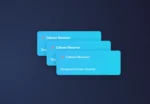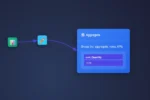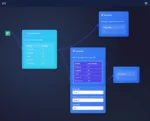
by tyler garrett | Jul 22, 2025 | Real-Time Streaming Systems
In today’s hyper-competitive, digitally transformed landscape, operational latency is the new technical debt—and every second (or millisecond) delayed in surfacing actionable signals impacts revenue, reliability, and user experience. At Dev3lop LLC, we architect and deliver data solutions that turn laggy, unreliable notifications into cutting-edge, sub-second alerting pipelines. If your operations, product, or analytics teams are still waiting on minutes-old metrics or chasing stale outages, it’s time to reimagine your alerting infrastructure. In this article, we’ll outline the architecture, challenges, and strategic advantages of real-time alerting systems that meet and exceed sub-second response times—so you can see issues as they happen, not after the impact is felt.
Engineering for Instantaneous Awareness
Traditional alerting systems often process streams in batches, introducing delays that can compromise operational agility. Sub-second alerting pipelines, by contrast, are engineered for immediacy—ingesting, processing, and routing signals to humans (or automated remediation) with astonishing speed. This means rethinking everything from data ingestion through event streaming (such as Apache Kafka or AWS Kinesis), employing highly-tuned stream processing frameworks, and sharding downstream workflows for low latency.
Implementing such systems requires a deep understanding of data engineering principles—an expertise that Dev3lop’s data engineering consulting services bring to clients seeking transformative operational visibility. From impact analysis automation for upstream schema changes to cost-optimized cloud scaling, we ensure every facet of the pipeline supports speed and reliability. Moreover, leveraging techniques such as approximate algorithms for big metrics enables rapid detection of anomalies without the full cost of exhaustive calculation. The end result: an alerting fabric that puts operations ahead of potential disruptions, rather than catching up after the fact.
Architectural Innovations and Visualization Integration
The technical heart of sub-second alerting lies in its architecture. Building this capability involves streaming ETL, scalable cloud messaging, and serverless event handling to minimize bottlenecks. Next-gen pipelines take advantage of parallel processing and intelligent buffering to prevent data jams and ensure every signal is processed without delay. Additionally, adopting distributed processing patterns and elastic cloud resources allows your data flows to match emerging load in real time—essential for reliability and cost efficiency, as described in our thoughts on cloud data service cost optimization strategies.
Of course, surfacing rapid alerts is only half the battle; empowering your analysts and operators to act is equally critical. This is where modern visualization tools, such as Tableau or custom dashboards, help teams monitor and drill down into signals as they happen. For inspiration on creating interactive dashboards in Tableau that connect with real-time data endpoints, see our comprehensive how-to. Specialized visualization—like ridgeline plots for rapid distribution comparison—further empowers organizations to not only react quickly, but to spot complex operational patterns that batch data would miss. By integrating these real-time visual assets, decision-makers gain tactical clarity at the moment it matters most.
Strategic Impact: From Operations to Analytics
Fast alerting pipelines don’t just turbocharge technical operations—they directly drive business results. Sub-second latency enables proactive issue mitigation, reduces downtime, and ensures regulatory compliance in sectors where timing is everything (think healthcare, logistics, or finance). It also unlocks new analytics possibilities: correlating instant operational triggers with global outcomes, facilitating A/B tests, and even mapping public sentiment shifts as they occur. See, for example, how public health visualization strategies for epidemiological data rely on real-time feeds to inform rapid response.
At Dev3lop, we extend these concepts beyond IT incident response. Real-time alerting can power dashboards for immigration data analytics and movement visualization, enable predictive maintenance, or underpin automated customer support interventions. The technology is fundamentally about information empowerment—delivering value as close to the point of data creation as possible, and allowing analytics teams to shift from reactive to strategic, thanks to always-fresh signals.
Conclusion: Future-Proof Your Signal Detection
The shift to sub-second operational alerting isn’t about trend-chasing. It’s a strategic evolution for businesses that want to stay ahead—transforming every byte of their operational exhaust into actionable, real-time insights. If you’re ready to leave sluggish, error-prone pipelines behind, or want to see how rapid alerting integrates with your broader data stack, our team of data engineering consultants is here to guide you. Harness the speed, flexibility, and intelligence of modern architectures and position your organization for a data-driven future, one signal at a time.
Thank you for your support, follow DEV3LOPCOM, LLC on LinkedIn and YouTube.

by tyler garrett | Jul 22, 2025 | Real-Time Streaming Systems
Imagine a digital ecosystem where applications respond to business events instantly, where data is always consistent and traceable, and where scaling horizontally is the norm, not the exception. At Dev3lop LLC, we thrive at the intersection of agility, analytics, and engineering innovation. Event-driven microservices, underpinned by persistent logs, have revolutionized how leading organizations achieve these goals, turning bottlenecks into breakthroughs. In this article, we’ll dissect how this paradigm empowers modern enterprises to act on insights in real time, increase system resilience, and future-proof their architecture—all while serving as a launch pad for business growth and innovation.
The Strategic Advantage of Event-Driven Microservices
In the dynamic landscape of digital transformation, microservices have emerged as the architectural backbone for organizations seeking rapid innovation. However, traditional request-driven approaches often cause brittle integrations and data silos, restricting scalability and agility. Enter the event-driven microservices model; here, systems react asynchronously to events—such as a new customer signup or an inventory update—resulting in a more decoupled and scalable ecosystem.
Persistent logs are the silent heroes in these architectures. They not only preserve every business event like a journal but also unlock the potential for robust analytics and auditing. Leveraging event logs facilitates data integrity with advanced SQL server consulting services, allowing you to address business requirements around traceability and compliance. When your systems are event-driven and log-reliant, you future-proof your IT and data teams, empowering them to integrate novel services, replay events for debugging, and support ever-evolving analytics needs. This is not just about technology, but fundamentally reimagining how your organization creates and captures value through real-time insights.
Driving Data Consistency and Analytical Power with Persistent Logs
Persistent logs are more than a backbone for microservices—they are central to unlocking total data lineage, version control, and high-fidelity analytics. By storing every change as an immutable sequence of events, persistent logs make it possible to reconstruct current and historical system states at any point in time. This capability is critical for organizations seeking to implement robust slowly changing dimension (SCD) implementations in modern data platforms, and empowers analytics teams to perform forensic investigations or retroactive reporting without disruption.
Perhaps more strategically, persistent logs allow for data versioning at the infrastructure level—an essential ingredient for organizations exploring comprehensive data version control as a competitive advantage. Imagine launching a new service and safely replaying events to populate its state, or resolving issues by reviewing a granular, timestamped audit trail. When combined with semantic versioning, as discussed in this deep dive on schema and API evolution, persistent logs create a living, resilient record that enables true agility. This is the engine that drives reliable data workflows and breakthrough analytics.
Architectural Patterns and Implementation Considerations
Implementing event-driven microservices with persistent logs isn’t just a technical choice—it’s a strategic roadmap. Architectural patterns like event sourcing and Command Query Responsibility Segregation (CQRS) use logs as the source of truth, decoupling the write and read models for greater flexibility and scalability. Selecting the right log technology—be it Apache Kafka, Azure Event Hubs, or bespoke database approaches—depends on your needs for consistency, throughput, and integration with enterprise systems.
Choosing the best approach should factor in your existing ecosystem and integration requirements. Organizations comparing open source and commercial ETL solutions should also consider how ingestion pipelines and microservices will interact with these persistent logs. Thoughtful attention must be paid to data type handling—overlooked integer overflow issues can cripple analytics. That’s why working with a consultancy experienced in both grassroots and enterprise-grade deployment is critical. The right partner accelerates your transition, builds resilient patterns, and ensures your event-driven future is both robust and innovative.
Unleashing Business Growth and Innovation with Event-Driven Analytics
Event-driven microservices aren’t just about system performance—they’re a catalyst for business transformation. By unlocking granular, real-time data, persistent logs fuel data-driven decision making and create new possibilities for customer experience optimization. With the ability to correlate, enrich, and analyze data streams as they happen, organizations can harness the power of advanced analytics to drive strategic growth and outpace the competition.
When designed thoughtfully, event-driven architectures with persistent logs allow organizations to create feedback loops, respond instantly to emerging trends, and test innovations with minimal risk. As these systems evolve, the insights derived—not just from the data, but from how business events are recorded and acted upon—become invaluable assets. This is not just a technical evolution; it’s a new standard for agility and competitive advantage across industries.
Tags: event-driven architecture, microservices, persistent logs, data analytics, data version control, business innovation
Thank you for your support, follow DEV3LOPCOM, LLC on LinkedIn and YouTube.

by tyler garrett | Jul 22, 2025 | Real-Time Streaming Systems
In the era of relentless digital acceleration, decision-makers are under mounting pressure to leverage every data point—instantly. The competitive landscape demands more than just machine learning; it requires the ability to extract, transform, and act upon raw data in real time. At Dev3lop, we help organizations transcend static batch processes, unlocking new frontiers with advanced analytics and consulting solutions that empower teams with rapid online ML scoring. This article dives deep into the art and science of real-time feature extraction—and why it is the bridge between data and decisive, profitable action.
The Strategic Imperative for Real-Time Feature Extraction
Feature extraction sits at the core of any data-driven initiative, selectively surfacing signals from the noise for downstream machine learning models. Traditionally, this process has operated offline—delaying insight and sometimes even corrupting outcomes with outdated or ‘zombie’ data. In high-velocity domains—such as financial trading, fraud detection, and digital marketing—this simply doesn’t cut it. Decision-makers must architect environments that promote feature extraction on the fly, ensuring the freshest, most relevant data drives each prediction.
Real-time feature engineering reshapes enterprise agility. For example, complex cross-system identification, such as Legal Entity Identifier integration, enhances model scoring accuracy by keeping entity relationships current at all times. Marrying new data points with advanced data streaming and in-memory processing technologies, the window between data generation and business insight narrows dramatically. This isn’t just about faster decisions—it’s smart, context-rich decision making that competitors can’t match.
Architecting Data Pipelines for Online ML Scoring
The journey from data ingestion to online scoring hinges on sophisticated pipeline engineering. This entails more than just raw performance; it requires orchestration of event sourcing, real-time transformation, and stateful aggregation, all while maintaining resilience and data privacy. Drawing on lessons from event sourcing architectures, organizations can reconstruct feature state from an immutable log of changes, promoting both accuracy and traceability.
To thrive, pipeline design must anticipate recursive structures and data hierarchies, acknowledged as notorious hazards in hierarchical workloads. Teams must address challenges like join performance, late-arriving data, and schema evolution, often building proof-of-concept solutions collaboratively in real time—explained in greater depth in our approach to real-time client workshops. By combining robust engineering with continuous feedback, organizations can iterate rapidly and keep their online ML engines humming at peak efficiency.
Visualizing and Interacting With Streaming Features
Data without visibility is seldom actionable. As pipelines churn and ML models score, operational teams need intuitive ways to observe and debug features in real time. Effective unit visualization, such as visualizing individual data points at scale, unearths patterns and anomalies long before dashboards catch up. Advanced, touch-friendly interfaces—see our work in multi-touch interaction design for tablet visualizations—let stakeholders explore live features, trace state changes, and drill into the events that shaped a model’s current understanding.
These capabilities aren’t just customer-facing gloss; they’re critical tools for real-time troubleshooting, quality assurance, and executive oversight. By integrating privacy-first approaches, rooted in the principles described in data privacy best practices, teams can democratize data insight while protecting sensitive information—meeting rigorous regulatory requirements and bolstering end-user trust.
Conclusion: Turning Real-Time Features Into Business Value
In today’s fast-paced, data-driven landscape, the capacity to extract, visualize, and operationalize features in real time is more than an engineering feat—it’s a competitive necessity. Executives and technologists who champion real-time feature extraction enable their organizations not only to keep pace with shifting markets, but to outpace them—transforming raw streams into insights, and insights into action. At Dev3lop, we marshal a full spectrum of modern capabilities—from cutting-edge visualization to bulletproof privacy and advanced machine learning deployment. To explore how our tableau consulting services can accelerate your data initiatives, connect with us today. The future belongs to those who act just as fast as their data moves.
Thank you for your support, follow DEV3LOPCOM, LLC on LinkedIn and YouTube.

by tyler garrett | Jul 22, 2025 | Real-Time Streaming Systems
In the fast-evolving landscape of real-time data, managing unpredictable event rates is more than just a technical feat—it’s a strategic advantage. At Dev3lop, we help companies leverage adaptive autoscaling to meet volatile demands, optimize costs, and drive resilience in analytics platforms. Autoscaling isn’t simply a matter of adding nodes automatically; rather, it’s about dynamically aligning resources with variable workloads, unlocking unprecedented scalability and operational efficiency. If you have encountered bottlenecks or mounting costs as your data volumes fluctuate, it’s time to advance beyond reactive hardware expansion and adopt a smarter, data-driven approach.
The Imperative: High Variability in Modern Event Streams
Today’s applications—from e-commerce tracking to IoT telemetry—rarely see steady, predictable data flows. Instead, events like sales surges, marketing campaigns, or sensor bursts can cause unexpected spikes. Traditional fixed-resource architectures are easily overwhelmed by such variability (leading to outages), or they remain overprovisioned during low-use periods (wasting spend). That’s why adaptive autoscaling has become essential in modern architectures: it offers nuanced scaling, instantly responding to real-time demands. Drawing inspiration from proven Node.js consulting services and contemporary data pipelines, adaptive autoscaling makes sure infrastructure mirrors the highly variable nature of the business itself—delivering both performance and value, every minute.
How Adaptive Autoscaling Works in Practice
The fundamental challenge—and opportunity—lies in detecting when to scale and by how much. Modern autoscaling solutions use fine-grained telemetry from queues, brokers, or custom event monitors to analyze not just volume, but also rate-of-change, event complexity, and system health. Key approaches such as predictive analytics or rule-based triggers can automatically orchestrate the provisioning of instances or containers, shaping your infrastructure with intelligence instead of blunt force. Critically, this flexibility can be applied to both compute and storage layers, especially when harnessing high-performance data techniques like memory-mapped file benchmarks for large datasets or implementing simplified SQL workloads to limit database pressure. The technical result? Higher reliability—and lower operational risk—without overpaying.
Architectural Strategies That Empower Autoscaling
Implementing adaptive autoscaling is not just a plug-and-play checkbox; it requires architectural alignment across your stack. For example, event-driven frameworks, decoupled microservices, and stateless service design allow workloads to be spread more evenly and scaled independently as needed. Innovations in bidirectional data synchronization and temporal data governance make it possible to maintain data fidelity and regulatory compliance even as instances come and go. Visualization and monitoring also play a pivotal role—transparent, real-time dashboards built with preattentive dashboard design or a keen focus on visualization ethics help decision-makers assess scaling effects at a glance. This architectural thinking ensures autoscaling is not an afterthought, but a core enabler of business agility.
Driving Innovation with Adaptive Scaling
Forward-thinking organizations aren’t just keeping up—they’re leveraging adaptive autoscaling to explore entirely new territories in analytics. By marrying flexible compute strategy with world-class visualization, as exemplified by self-driving car data analytics or deep learning architecture visualization, teams are accelerating time-to-insight while keeping infrastructure nimble. It opens the door to more creative data storytelling through the art of storying telling through data visualization and infuses scalable systems with both color harmony and intelligence, guided by color harmony, theory, and applied palette usage. Ultimately, autoscaling isn’t just for peak-load insurance—it’s a catalyst for innovation in a world where event rates are unpredictable by definition. For organizations ready to seize this advantage, now is the time to reimagine your data infrastructure for true, adaptive scale.
Thank you for your support, follow DEV3LOPCOM, LLC on LinkedIn and YouTube.

by tyler garrett | Jul 22, 2025 | Real-Time Streaming Systems
The era of high-velocity, multi-source data is redefining enterprise analytics and intelligence. As more organizations invest in robust data engineering and real-time insights, the challenge of executing performant streaming joins across heterogeneous sources has moved front and center. Yet, while joining data from disparate databases, data lakes, and event systems in real time promises a new echelon of business value, it also demands a nuanced blend of architecture, technology, and tooling. At DEV3LOP, we help leading companies achieve reliable, scalable, and cost-efficient streaming join strategies, empowering decision-makers to seamlessly bridge operational silos and unlock untapped analytical potential. In this article, we’ll guide you through the latest advances in streaming join optimization, provide architectural insights for dealing with diverse data landscapes, and offer a proven pathway—from advisory to implementation—for next-level data integration success.
Understanding Streaming Joins in Multi-Source Environments
Modern data pipelines are rarely homogenous. Enterprises often manage critical operational records in relational databases, aggregate massive clickstreams from Kafka, and curate business metrics in varied NoSQL or cloud-native stores. Bringing real-time value from such disparate origins requires efficiently joining streams—often with conflicting schema designs and data arrival patterns. Streaming joins, as opposed to batch joins, handle these complexities in motion, enabling near-instantaneous insight across constantly changing datasets.
An effective streaming join strategy isn’t just about speed. Decision-makers must tackle data consistency, handling out-of-order events, and ensuring that event time semantics remain accurate. Tools and frameworks such as Flink, Spark Structured Streaming, and cloud-native services plug into these heterogeneous environments with increasing elegance, but the true edge comes from a tailored approach that factors in source-specific optimizations. Balancing windowing, buffering, late arrivals, and different throughput levels—while avoiding bottlenecks—is vital for production-grade integration of operational and analytical data. Overcoming these hurdles calls for not just specialized skills, but a deep understanding of the latest CDC topologies for event-driven analytics.
Architectural Considerations: From Schema Registry to Data Observability
Building reliable streaming joins across platforms involves more than protocol-level compatibility—it requires a cohesive framework addressing metadata management, schema evolution, and governance. For example, enforcing strong contracts with a schema registry in data integration flows reduces coupling between sources, and mitigates the risks of runtime incompatibilities as upstream schemas evolve. Combined with a robust monitoring stack, these measures ensure that data freshness and accuracy never take a back seat to throughput.
It’s also essential to implement a comprehensive data observability strategy when orchestrating complex streaming joins. Sophisticated tooling can offer early warnings on lag, window skew, or join failures—saving time, reducing costs, and protecting downstream data quality. As you plan for optimization, don’t overlook advanced considerations like quantum-resistant encryption for secure data movement, or AI-based vetting methods for the engineers spearheading your data architecture evolution.
Strategic Optimization for Business Impact
The ultimate goal of streaming join optimization isn’t just technical performance—it’s to drive transformative business outcomes. Whether it’s enabling new customer dashboards, predictive analytics, or smoother workflow automations, finely tuned join operations accelerate time to value across every line of business. But optimization is not a one-size-fits-all endeavor; it hinges on continuous testing, validation, and collaboration with business stakeholders.
Here, pursuing the science of measurable improvement—such as A/B testing optimization improvements—can demonstrate ROI and guide future enhancements. Similarly, investing in visualization best practices, like those found in preattentive processing for data dashboards, ensures that the insights surfaced via streaming joins are both actionable and comprehensible to business users. Partnering with a team that understands these nuances and has a proven track record in maximizing reporting SaaS ROI transforms streaming architecture from an IT cost center into a core driver of competitive differentiation.
Transform Your Data Integration Capability
Streaming join optimization across heterogeneous sources holds the keys to the future of real-time analytics—but it demands technical depth, architectural foresight, and business alignment. At DEV3LOP, our team can guide you from initial concept through full-fledged implementation, helping you turn fragmented datasets into cohesive, powerful sources of business intelligence. Whether you’re seeking rigorous MySQL consulting services or building the next generation of event-driven data platforms, our expertise accelerates value and lowers your learning curve. Ready to transform your data infrastructure and outpace the competition? Reach out to explore how DEV3LOP can help your organization realize strategic outcomes with streaming join optimization today.
Thank you for your support, follow DEV3LOPCOM, LLC on LinkedIn and YouTube.





























